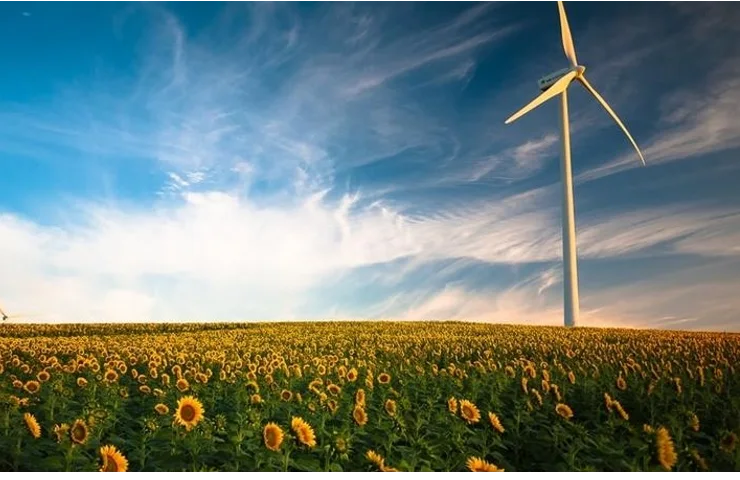Budget 2022 has increased the allocation for the Ministry of Environment at Rs 3,030 crore, of which Rs 460 crore goes towards battling pollution. The National Mission for Green India gets Rs 361.69 crore as compared to last year's Rs 290 crore.
Budget 2022 talks about sovereign green bonds, sustainable development, climate action and hints at the setting up of a green hydrogen mission and giving a push to a circular economy. The government plans to work on energy transition, improved and connected transport as well as raising climate finance.
With countries reeling under the effects of climate change as witnessed through increased flash floods, forest fires, droughts and freak natural disasters, governments across the world are looking at sustainable development and reducing dependence on fossil fuels to pull down global warming.
While presenting the Budget, Finance Minister Nirmala Sitharaman said that as part of the government's vision to build the country for the next 25 years, it aims to "promote digital economy and fintech, technology-enabled development, energy transition, and climate action".
Sitharaman labelled 'green economy' as a "sunrise economy" through which the government hopes to reduce waste, generate employment and improve public transportation.
Lauding the Budget, Prime Minister Narendra Modi said that the Union Budget is full of new possibilities for "'more infrastructure, more investment, more growth and more jobs". He said the budget will "ensure a bright future for the country's youth. This budget brings in new hopes and opportunities for the people. It strengthens the economy; it's full of new opportunities of more infrastructure, more investment, more growth and more jobs. This budget ensures a bright future for the youth".
Union Minister Nitin Gadkari too hailed the Budget for its focus on developing modern infrastructure. Gadkari tweeted: "The budget presented by the Finance Minister Mrs N Sitharaman under the guidance of Narendra Modi is a budget to promote modern infrastructure in the country, which will lay the foundation for a new India and improve the lives of 130 crore Indians. #AtmaNirbharBharatKaBudget".
The government plans to give impetus to the 'PM Gati Shakti Master Plan for Expressways' to facilitate faster movement of people and goods. The National Highway network will be expanded by 25,000 km in 2022-23 and Rs 20,000 crore will be mobilized to complement public resources. The Gati Shakti plan was launched in October 2021 that brings 16 ministries including Railways and Roadways together for integrated planning and implementation of infrastructure connectivity projects.
The government plans to formulate a policy on swapping of batteries for electric vehicles (EV) as well as creating more charging stations for EV in a bid to promote them over vehicles that run on polluting fuels.
Dr Anjal Prakash, Research Director and adjunct associate professor at the Bharti Institute of Public Policy, Indian School of Business, welcomed the budget. He said: "For climate action, this budget fairs quite well. The focus on sustainable urban planning and mass transport is a welcome step. It is estimated that half of Indians will be living in urban areas by 2050. The high-level committee of urban planners, economists and setting up institutions for capacity building is a welcome step. I hope that the planners will recommend urban infrastructure to be climate-resilient as many Indian cities are prone to climate-related risks and disasters".
Sitharaman also announced that sovereign green bonds will be issued to generate resources for setting up green infrastructure. The green bonds will help energy transition from fossil fuel to clean energy.
Prakash said: "Announcing a climate action fund is a welcome step where the government’s share is a maximum of 20% and the rest is by the private parties. The Green Bonds for mobilising green infrastructure will be used for projects that will help reduce India’s carbon intensity. The allocation for renewable energy and energy storage technologies such as solar modules are another area that needs applause".
The Finance Minister proposed co-firing 5-7 per cent biomass pellets in thermal power plants reducing CO2 by 38 MMT annually. Sitharaman said: "This will also provide extra income to farmers and job opportunities to locals and help avoid stubble burning in agriculture fields".
The government also plans to ensure energy efficiency and saving measures by setting up the Energy Service Company (ESCO) business model in large commercial buildings.
Summing up the budget, Prof SN Tripathi, Civil Engineering department, Steering Committee Member, National Clean Air Programme, MoEFCC said: “By focusing on clean and sustainable development, the budget has focused on three major sectors: transport, energy and agriculture with an aim to reduce both–reductions in CO2 and air pollution emissions, which augur well for clean air programmes in the short term and achieving carbon neutrality in the long term".




















